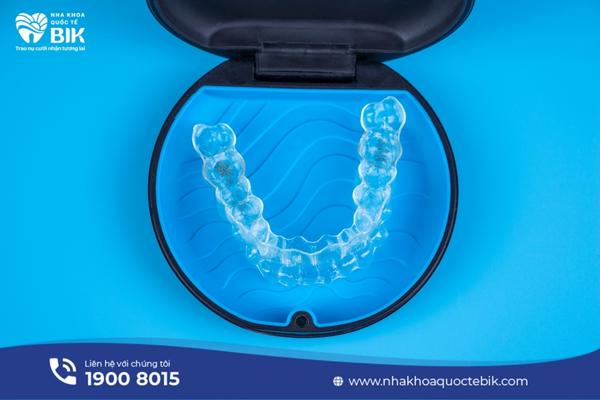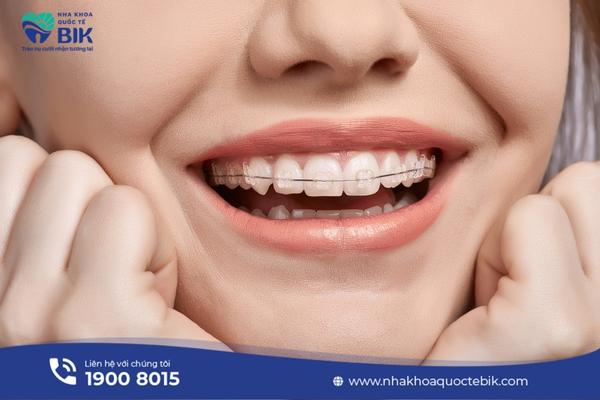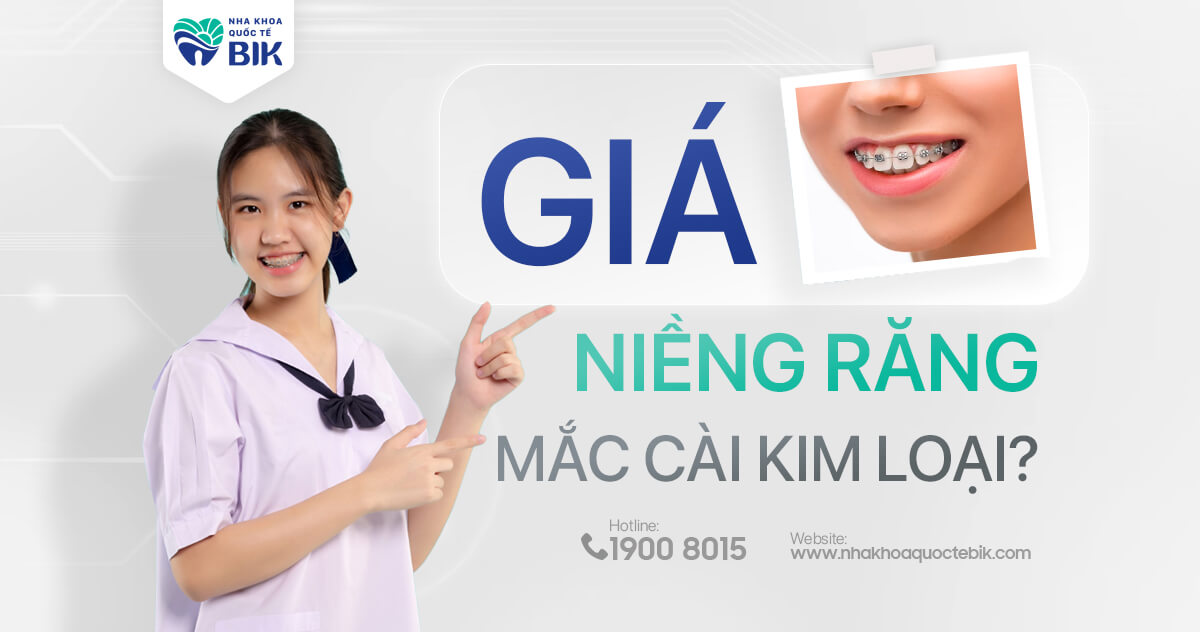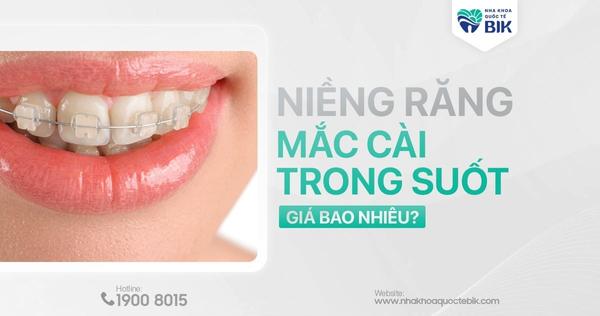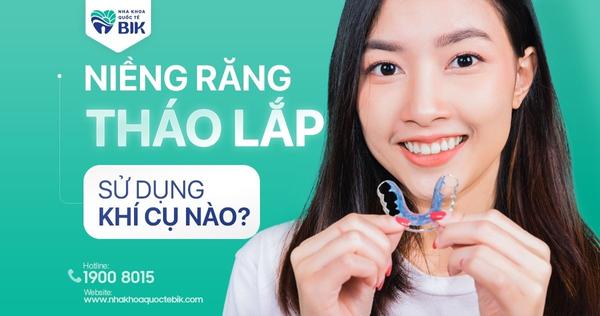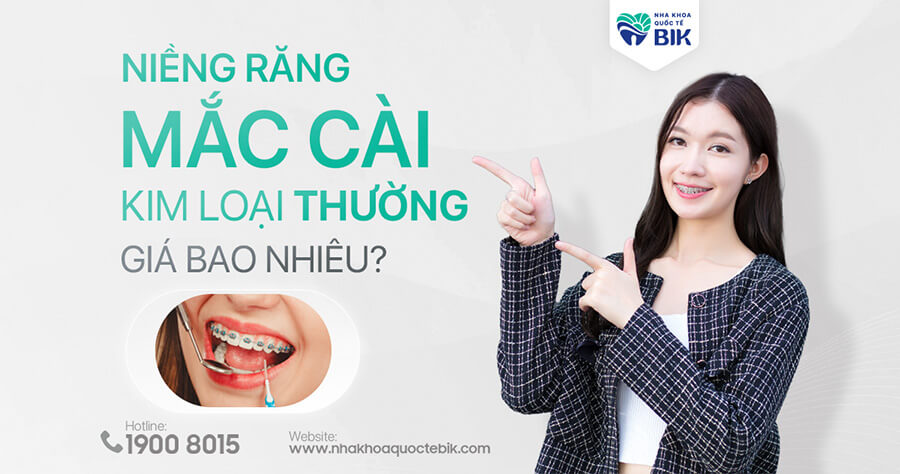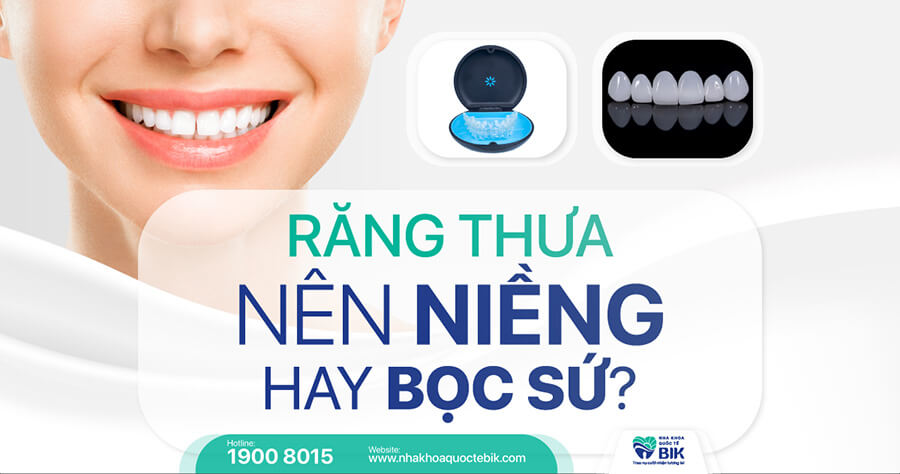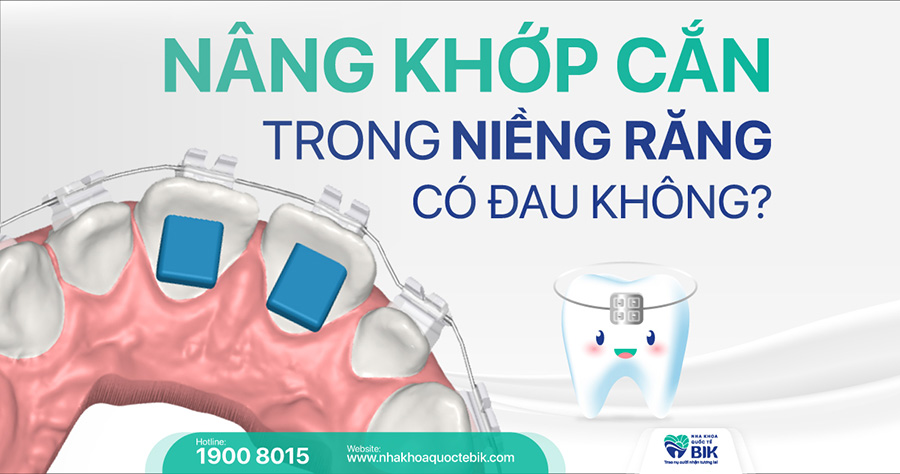
There are many cases where customers need to perform orthodontics when encountering bite misalignment such as deep bite, cross bite,… At this time, bite lifting in braces has the effect of supporting the archwire system, braces to help the two jaws achieve the desired correlation, at the same time, this therapy also helps to shorten the treatment time significantly.
1. What is bite lifting?
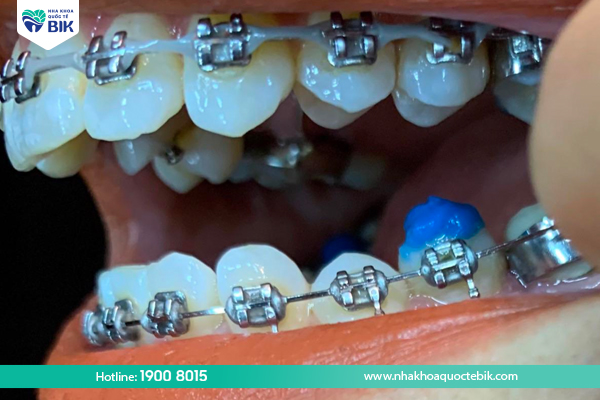
When the teeth in the upper or lower jaw develop excessively, it will cause the bite in the two jaws to become unbalanced and not close together. This misaligned bite condition not only affects aesthetics but also causes many obstacles in chewing and pronunciation. At this time, the patient needs to perform orthodontic braces combined with bite lifting techniques to arrange the teeth in the correct position and balance the bite.
Bite lifting is a therapy performed in parallel with wearing braces. When lifting the bite, synthetic materials will be placed on the molars or the back of the incisors. These objects are inserted into the contact surface of the bite with the purpose of preventing the two jaws from completely closing.
Bite lifting is indicated in certain cases to reduce the pressure on the lower jaw, avoiding misalignment between the two jaws. In addition, bite lifting is also one of the ways to shorten the time of braces.
2. In which cases is bite lifting needed when wearing braces?
Not all cases of braces require bite lifting. Usually, bite lifting will be applied in cases where the patient has problems such as:
– Deep bite
– Cross bite
– Teeth grinding habit
Therefore, to know whether or not you need to have a bite lifting, you should go to a reputable dental facility to be examined and specifically consulted by a doctor.
3. Methods of occlusal augmentation in braces
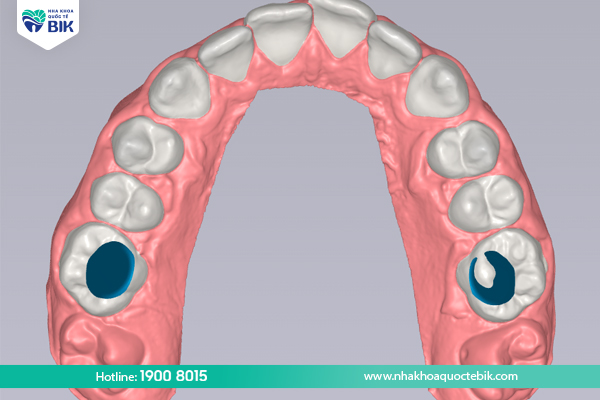
Currently, there are 3 techniques of occlusal augmentation in braces that are commonly applied in dental clinics:
3.1. Occlusal augmentation jaw
Using an occlusal augmentation jaw is a technique indicated for open bite conditions. According to experts, open bite is often caused by the upper teeth protruding too far, making it impossible for the patient to close the two jaws tightly. Dentists will attach a rectangular tray to the lower jaw teeth, while adding a protective layer to the upper jaw teeth. Occlusal augmentation trays are usually made of plastic.
3.2. Occlusal Lifting Splint
The method of using a specialized splint is often prescribed for cases of crossbite. The occlusal lift splint has the effect of preventing the two jaws from touching each other from the molar position, and the upper incisors cannot continue to touch the lower incisors as before. The advantage of this method is that it can limit the situation of slipping or popping the braces.
Doctors often use a specialized dental solution to cover the surface of the two jaws to create an occlusal lift splint. Then, the patient will be asked to bite and shape for a few seconds, at the same time the doctor will use a laser to help shape the solution and form a layer between the patient’s two jaws.
3.3. Occlusal Lifting Splint
In cases where the patient has a deep bite, this occlusal lift technique will be prescribed. A deep bite is a phenomenon in which the upper jaw teeth partially or completely cover the lower jaw teeth.
The bite lift for the front teeth is made of plastic, rubber or small metal. This device will be attached to the back of the front teeth to prevent the lower jaw from being pushed up too high when performing the chewing function.
The bite lift will usually be attached to the back of the teeth to avoid strong impacts that can damage the appliance. In case the patient chooses clear braces, the bite lift will be attached directly to the braces tray.
4. Effects of bite lift in braces
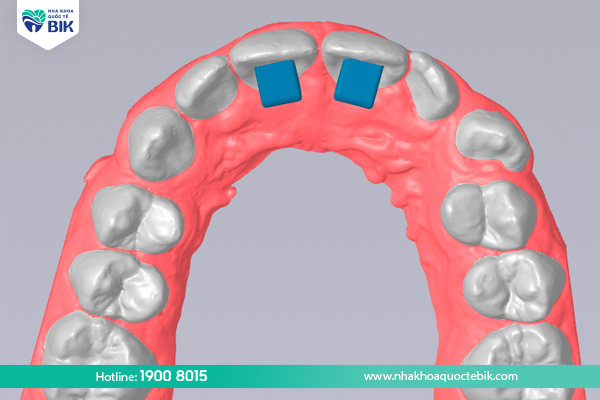
The effect of bite lift will be different for each case:
4.1. Deep bite
Deep bite is often manifested by the upper jaw covering and obscuring the lower jaw when biting normally. In some cases, the edge of the lower jaw almost does not touch the upper jaw.
If this condition continues without any intervention, the patient’s chewing function will be increasingly impaired, causing loss of aesthetics and confidence when communicating, especially when braces are used.
In cases where the patient chooses orthodontic braces, if the bite is not lifted, the braces of the lower jaw will rub against the inside of the upper jaw, causing damage to the gums and reducing the effectiveness of the treatment.
4.2. Cross bite
The most obvious sign of cross bite is that the upper and lower jaw teeth are misaligned and asymmetrical. In addition, if the line from the tip of the nose to the gap between the two front teeth does not form a straight line, it is also a sign of this condition.
Raising the crossbite will help the process of creating force when chewing not be affected, and at the same time avoid the situation of the braces coming loose or slipping while using.
4.3. People who often grind their teeth
Raising the bite is an extremely necessary measure for people who have the habit of grinding their teeth, especially when sleeping to reduce pressure on the teeth, creating more favorable conditions for pulling and adjusting the teeth as well as correcting the bite. In addition to raising the bite, patients can also take some other measures to intervene and overcome this condition.
5. How long does it take to raise the bite when wearing braces?
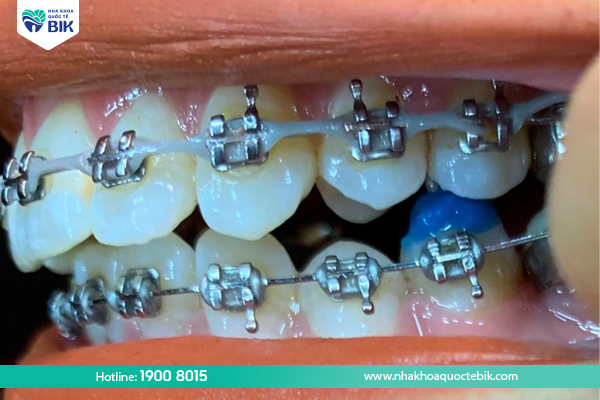
Depending on the degree of tooth misalignment, the time to raise the bite in each patient will be different. According to statistics, this time will fluctuate on average from 3 – 12 months, in cases of only mild malocclusion, this time may be shorter. On the contrary, if the level of malocclusion is severe, it will take longer to achieve the desired effect.
The bite raising process will be performed at the same time as wearing braces and aligners, so customers will not have to spend too much time and effort to perform each individual technique.
When the bite has improved and the two jaws are relatively related, the doctor will remove the bite-lifting devices. The orthodontic braces process will continue according to the protocol without any obstacles.
6. Does bite-lifting in braces hurt?
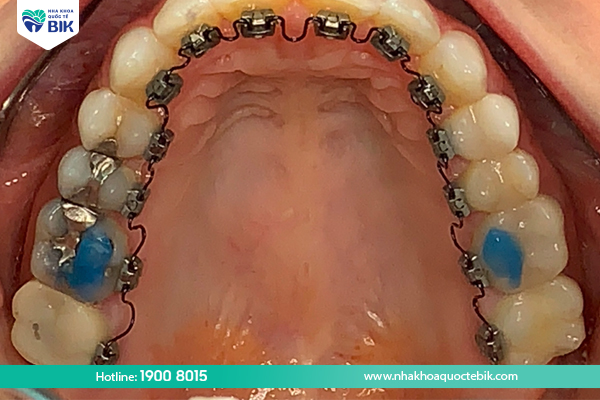
In fact, bite-lifting devices will not cause any pain or discomfort to the patient throughout the treatment process. However, wearing the device in the beginning can make the customer feel uncomfortable and awkward in eating, communicating and daily oral care activities.
The temporomandibular joint system and masticatory muscles need to change to gradually adapt to the device, so in the beginning, when chewing, it will be difficult to avoid temporomandibular joint pain and mouth muscle fatigue. However, this condition will improve after just a few days and customers can gradually feel more comfortable and easier when eating and talking.
7. Notes when performing bite lift
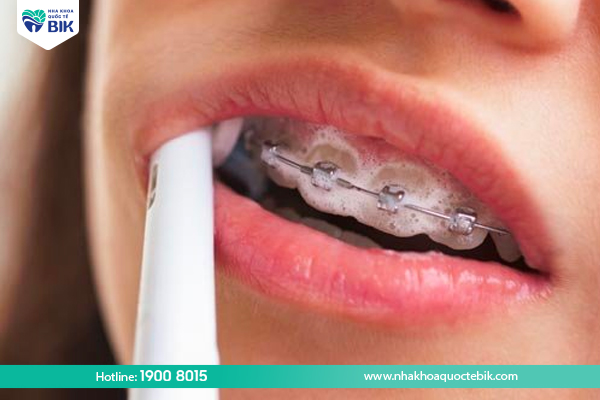
To shorten the time needed to perform bite lift, customers should note the following:
7.1. Proper oral hygiene
– Brush your teeth at least twice a day with a soft-bristled toothbrush or interdental brush to remove all food plaque on the tooth surface as well as on the braces and archwire.
– Use diluted salt solution or specialized mouthwash combined with dental floss to completely remove remaining food particles in the oral cavity.
– Use fluoride toothpaste to support healthy teeth throughout the braces process.
7.2. Reasonable diet
– Do not smoke, limit alcoholic beverages or colored foods.
– Do not eat foods that are too hot or too cold, especially for customers who choose metal braces.
– Eat lots of green vegetables and foods rich in vitamin C, which are good for gums and teeth.
7.3. Regular check-ups
Customers should regularly visit the dentist as instructed by the doctor to have their jaw lift device checked. During the process of wearing the device, if you see signs of deviation or separation of the jaw expander, you should immediately notify the doctor for timely correction.
So, raising the bite in braces is a necessary therapy to help the bite become more balanced and at the same time shorten the treatment time. Not all cases require raising the bite, so customers should go to a reputable dental facility to have the doctor examine and advise based on the specific oral condition

